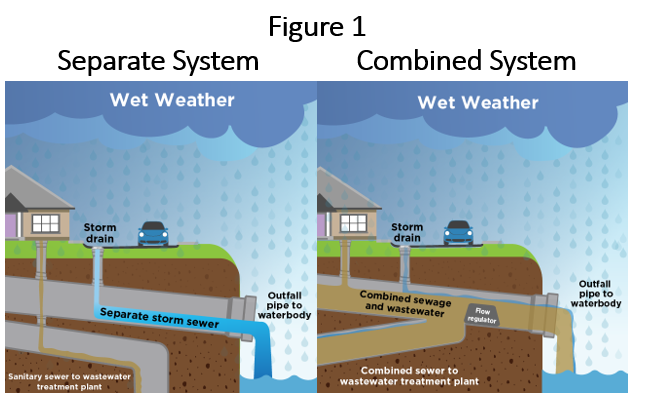When it rains hard in San Francisco, raw sewage flows into the Bay. The Environmental Protection Agency has asked the City to fix the problem. San Francisco responded by suing.
Last week, San Francisco’s lawsuit against the Environmental Protection Agency and its implementation of the Clean Water Act reached the Supreme Court.
As CNN notes, some City leaders, including 8 of 10 Supervisors, are unhappy to be part of a challenge to a landmark environmental law. The San Francisco Public Utilities Commission and the Mayor are both strong supporters of the lawsuit.
At issue is San Francisco’s combined wastewater-storm water system.
In most cities, including almost all on the west coast of the U.S. the systems are separate. When you flush a toilet or take a shower, the effluent goes into a wastewater system to a treatment plant where it is (largely) purified before it is returned to the environment. Rainwater is moved through a separate set of pipes.
In San Francisco, however, wastewater effluent (i.e. sewage) and storm water go into one system. This works fine most of the time. But in big storms, the load is too great for the treatment plants and raw untreated sewage flows into San Francisco Bay, into the ocean and onto beaches – harming fish, marine mammals and human health. See Figure 1.

For more information on combined sewer overflows, see EPA website.
What’s not clear are what San Francisco’s options are if they must comply. The City notes the hardship of building an entirely new system would be onerous, but it should also be able to enlarge the existing combined system to better handle future storms. Other cities with combined systems are watching closely and have weighed in on San Francisco’s side.
Another unknown is how far the Supreme Court will take its repeal of the Chevron standard. For 40 years, “Chevron deference” allowed government agencies wide discretion, often in how to implement environmental statues. It has only been 4 months, so it is too early to fully determine the effect of the loss of the Chevron standard.
The outcome of City and County of San Francisco v. Environmental Protection Agency is being closely watched and is expected to set a precedent for EPA’s ability to enforce the Clean Water Act throughout the country.
